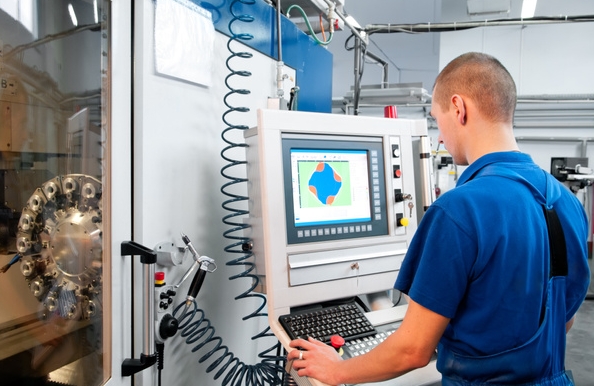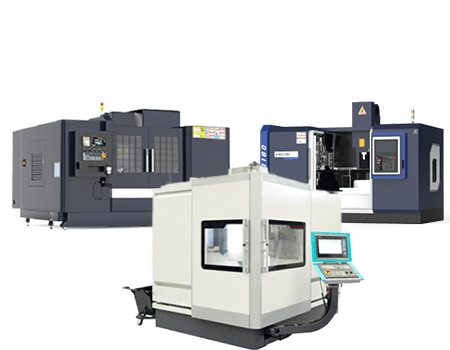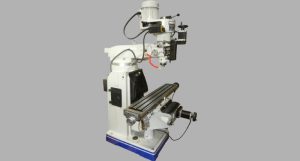CNC machines have become indispensable in today’s rapidly advancing manufacturing landscape. Their ability to produce highly precise components with minimal human intervention has revolutionized various industries, from automotive to aerospace.
Below is a list of all the CNC Machine parts we have encountered in CNC Machine.
- Spindle
- Linear Guides and Bearings
- Lead Screws and Ball Screws
- Worktable
- CNC Controller
- Servo Motors and Drives
- Encoders
- Human-Machine Interface (HMI)
- Tool Holders/Tool Turret (for CNC Lathes)
- Chuck
- Headstock
- Tailstock
- Bed and Frame
If you’re new to CNC technology or considering purchasing a CNC machine or its parts, it’s important to understand the key components. In this article, we’ll take an in-depth look at the various parts of a CNC machine, their functions, and considerations for purchasing them.
CNC Machine Overview
CNC machines are automated milling devices that utilize computer-controlled commands to remove material from a workpiece to produce precise shapes and designs. Unlike traditional machines that require manual operation, CNC machines operate based on coded instructions (G-code) that dictate movements, speeds, and tool changes. These machines come in various types, including milling machines, lathes, routers, and laser cutters, each suited for different tasks but generally sharing similar core components.
In manufacturing, companies value CNC machines for their ability to produce consistent and accurate parts efficiently. As a result, many industries have widely adopted them to create everything from simple mechanical parts to complex aerospace components.
Key CNC Machine Parts
Mechanical Components
Spindle: The spindle is one of the most critical components of a CNC machine. It holds and rotates the cutting tool, enabling it to remove material from the workpiece. The spindle’s speed, power, and precision are crucial factors in determining the machine’s performance, particularly when machining different materials. Typically, manufacturers use high-speed spindles for lighter materials, while they rely on more powerful spindles for tougher materials like steel.
Linear Guides and Bearings: These components ensure that the machine’s moving parts, such as the spindle and the worktable, move smoothly and precisely. Linear guides provide the path along which machine components move, while bearings reduce friction, allowing for smooth motion. The accuracy of these parts is vital for achieving the tight tolerances required in precision machining.
Lead Screws and Ball Screws: These screws convert the rotational motion of motors into linear motion, which moves various parts of the CNC machine along its axes. Manufacturers generally use lead screws in applications requiring lower speeds and higher loads, while they choose ball screws for their higher efficiency in high-speed applications.
Worktable: The worktable is where the workpiece is secured during machining. Depending on the machine type, the worktable can be fixed or movable, and some tables can rotate to allow for multi-axis machining. The size and material of the worktable are important considerations, as they need to support the weight and size of the workpiece without compromising precision.
Control System Components
CNC Controller: The CNC controller is the brain of the machine, interpreting G-code instructions and controlling the movements of the machine’s components. It ensures that each part of the machine moves in synchronization to produce the desired output. Modern CNC controllers often feature advanced capabilities, such as adaptive control, which adjusts machining parameters in real-time based on feedback from the machine.
Servo Motors and Drives: Servo motors control the movement and speed of the machine’s components, while servo drives regulate the power supplied to these motors. Together, they ensure that the machine operates smoothly and accurately, even during complex machining operations.
Encoders: Encoders are feedback devices that provide real-time data on the position of the machine’s components. This information is sent back to the CNC controller, allowing it to make precise adjustments to the machine’s movements and ensure accuracy.
Human-Machine Interface (HMI): The HMI is the user interface through which operators interact with the CNC machine. It allows operators to input commands, monitor machine performance, and make adjustments as needed. Modern HMIs are often touchscreen-based and provide intuitive controls for ease of use.
Cutting Tools
Types of Cutting Tools: CNC machines use a variety of cutting tools, including end mills, drills, and lathes. The choice of tool depends on the material being machined and the desired outcome. For example, end mills are commonly used for milling operations, while drills are used for creating holes. The material, coating, and geometry of the cutting tool also play significant roles in its performance and longevity.
Tool Life and Maintenance: The life of a cutting tool depends on several factors, including the material being machined, cutting speed, and tool maintenance. Regular maintenance, such as sharpening and proper storage, is essential to extend tool life and ensure consistent machining quality.
Essential Ancillary Parts in CNC Machines
Tool Holders (for Milling and Non-Lathe Machines)
Function and Importance: Tool holders secure cutting tools within the spindle, playing a critical role in ensuring that the tools remain firmly and accurately in place during machining. This firmness is essential for achieving high precision. Depending on the specific tool and application, manufacturers use different types of tool holders, such as collets, end mill holders, and chucks.
Tool Turret (for CNC Lathes)
Functionality and Design: In CNC lathes, the tool turret holds multiple tools and can rotate to switch between them quickly during machining. This allows for efficient sequential operations without the need for manual tool changes, significantly increasing productivity. The design and indexing accuracy of the tool turret are crucial for minimizing downtime and ensuring consistent machining results.
Chuck
Function and Types: A chuck is a clamping device used to hold the workpiece securely during machining. There are various types of chucks, such as three-jaw chucks, four-jaw chucks, and collet chucks, each suited for different workpiece shapes and sizes. For instance, manufacturers commonly use three-jaw chucks for round workpieces, while they use four-jaw chucks to accommodate irregular shapes.
Headstock
Role and Components: The headstock houses critical components like the spindle, gears, and drive mechanisms. It is responsible for transmitting power from the motor to the spindle and ensuring that the spindle rotates at the desired speed. The headstock’s design and build quality are essential for maintaining the machine’s overall stability and precision.
Tailstock
Purpose and Usage: The tailstock provides support to the end of a long workpiece during machining, preventing it from bending or vibrating. It can be adjusted or removed depending on the machining requirements, making it a versatile component for various turning operations.
Bed and Frame
Structural Importance: The bed and frame form the foundation of the CNC machine, providing the necessary support and rigidity. They are typically made from cast iron or other materials with high damping properties to minimize vibrations during machining. A well-designed bed and frame are crucial for maintaining the machine’s accuracy and longevity.

Considerations for Purchasing CNC Machines and Parts
When purchasing a CNC machine or its parts, you should consider several factors to ensure that the investment meets your needs and provides long-term value.
CNC Machine Specifications
Understanding the specs of a CNC machine is important. You need to make sure the spindle speed, power, worktable size, and axis movements match the type of work you want to do. For example, you might need a machine with a higher spindle speed to cut softer materials at high speeds. Or you might need a larger worktable to handle bigger workpieces.
Quality of Parts
The quality of the parts on a machine affects how well it performs, how reliable it is, and how long it lasts. High-quality parts, like precision bearings and lead screws, make the machine run smoothly and accurately. Cheap or incompatible parts can cause the machine to break down a lot, make it less accurate, and cost more to maintain.
Compatibility and Upgradability
Make sure the parts you buy will work with the CNC machine you already have. Also, think about whether you might want to upgrade your machine in the future. Machines that can be easily upgraded with new parts, like better controllers or faster spindles, will last longer and stay competitive as technology improves.
Supplier Reputation and Support
You want to buy CNC machines and parts from a supplier you can trust. A good supplier will sell you reliable products and give you great customer support. This includes things like warranties, technical help, and service after the sale. This support is important because it helps you fix problems quickly and get back to work.
Cost vs. Value
While the cost is important, you also need to think about the value you get from the machine or parts. Spending more money on better parts might cost more up front, but it can save you money on maintenance, make your machine last longer, and help it perform better. In the long run, you get more value for your money.

Maintenance and Care of CNC Machine Parts
Taking care of CNC machines and their parts is important. It keeps them running well and makes them last longer.
Regular Maintenance Routines
You need to do regular maintenance tasks to keep the parts on your machine in good shape. For example, you need to lubricate the linear guides and ball screws to keep them from wearing out and to make them move smoothly. You also need to clean the machine to get rid of chips and dirt that can damage the parts.
Troubleshooting Common Issues
Knowing how to fix common problems can keep small issues from becoming big problems. For example, if your spindle gets too hot, it might be because it needs more lubrication or you’re pushing it too hard. You can fix that by adjusting your machining settings or doing some maintenance. If your tool holders aren’t lined up right, you can fix that by recalibrating the machine.
Importance of Documentation
Keeping good records of the maintenance and repairs you do is important. It helps you keep track of how your machine is doing and lets you see if there are any patterns that might point to bigger problems. It also helps you when you need to talk to your supplier or a technician to get help with a problem.
Future Trends in CNC Machine Parts
The world of CNC machining is always changing. New ideas and technologies are coming out all the time that can make your machine work better and faster.
Advancements in Technology
One big trend in CNC machine parts is the use of new materials like ceramics and composites. These materials are stronger and can handle more heat. That means parts like spindles and bearings last longer and you don’t have to replace them as often. Another trend is the use of smart parts that have sensors built in. These sensors can tell you how your machine is doing in real time and let you know when you need to do maintenance.
Automation and AI Integration
The use of artificial intelligence (AI) and machine learning in CNC controllers is changing the game. These technologies let the machine do more of the work on its own. It can figure out the best settings to use based on what it’s doing and what’s happening around it. That means you get more done, do it better, and waste less time and material.
Sustainability Considerations
As people start to care more about the environment, they’re thinking about how to make CNC machines and their parts more energy efficient and easier to recycle. This helps cut down on waste and pollution from making things. It can also save you money because you use less energy and don’t have to buy as much material.
Conclusion
Whether you’re just starting out or you’ve been doing this for a while, you need to understand the different parts of a CNC machine. From the spindle and linear guides to the tool holders and chucks, every part plays a role in how well your machine works. When you buy CNC machines or parts, you need to think about things like quality, compatibility, and the reputation of the people you buy from.
As technology changes, you need to keep up with the latest trends and ways to take care of your CNC machines. Whether you want to learn more or buy something new, knowing these things will help you get what you need in the world of CNC machining.











